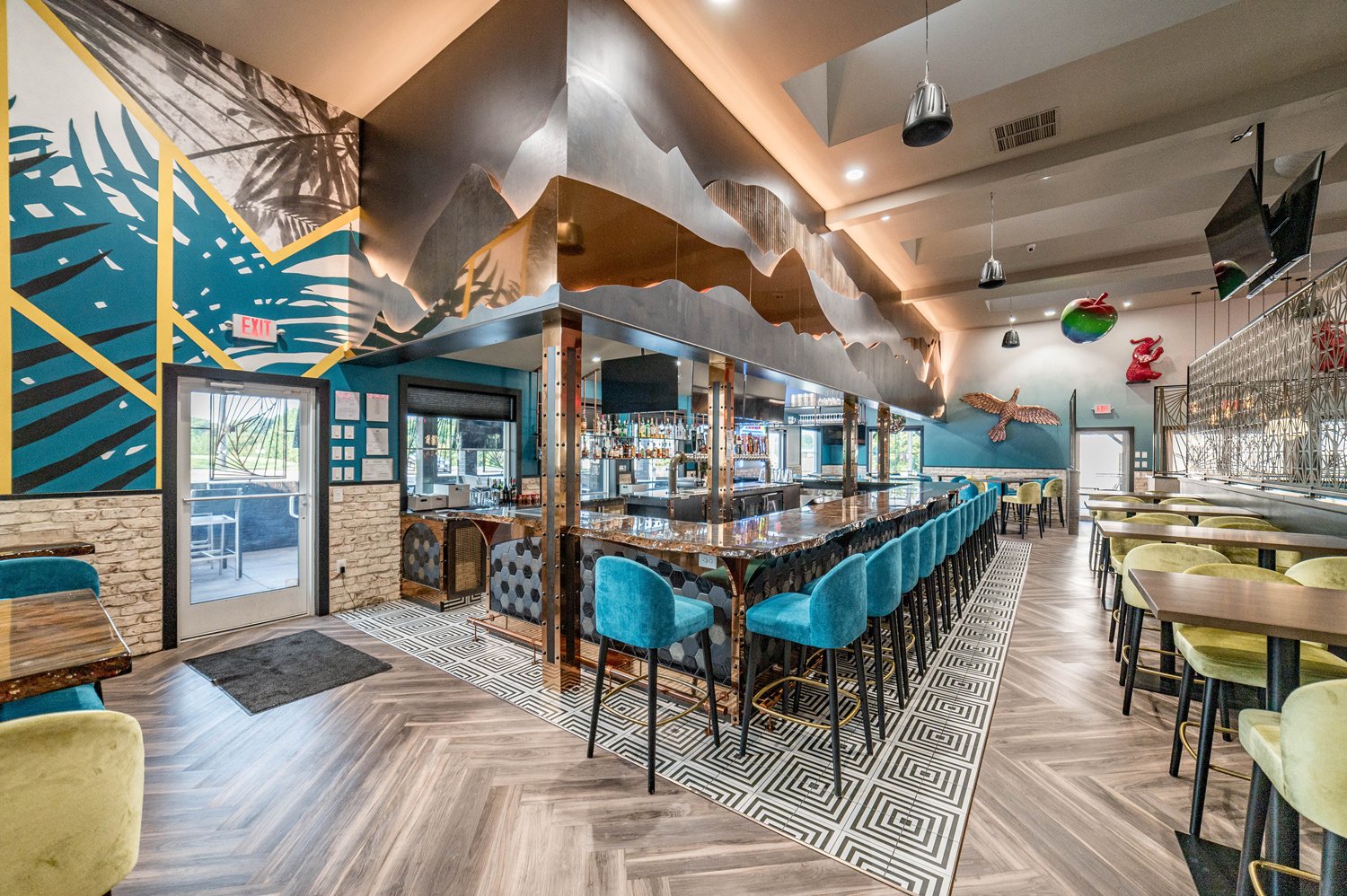Hospitality Design, Today.
Figo36
Over the last 10 years, we have seen an incredible shift in the interiors throughout hospitality design, from restaurants to hotel lobbies, gyms, cafés, bars, and spas. There used to be a standard around building brand equity with familiarity from space to space. Regardless of where you were, every company’s location was identical. There was very little individualism in the lobbies and dining rooms, which as a result, often felt sterile and cold. Hospitality focused on traditional values that were conservative and dated. Consistency was valued as the most important factor to design as it was seen to establish a quality standard.
Today, we are experiencing a renaissance in hospitality design where the current norms call for uniqueness. There is a new atmosphere that tells a more localized story. Where the standard upholds the integrity of a brand while sharing a more detailed narrative that visually communicates the food and surrounding neighborhood. Now, we see the focus shift to a quality of experience that leaves the consumers wanting more and challenges them to get out of routine. We have also seen the rise of social visibility, where one of the greatest marketing tools a business can have is the post shares by their guests.
There is an emerging movement that you see in hospitality design today where more attention is being given to consumers' emotional connection with a space. This is done by leveraging more of a story with the user experience. A company can share values and purpose with full transparency and benefit from the loyalty that comes with consumers on a deeper level. When the doors open and consumers start experiencing the space, the elements that were created with purpose are the things that create emotional connections.
The Vintage Whisky & Cigar Bar
One way we have been able to pull out more stories in our hospitality work is to focus on three important factors of a business—Locality, History, and Aspirations. The location of a business offers great insight into what local demographics react to and the aesthetics that resonate with those consumers. Another great element that helps tell design stories can be the history of a space, a product, or community. And lastly, aspiration can be a great kick starter in telling a visual story as a brand’s focus and purpose can help make the emotional connections that have become so important with modern interior design.
Mellow Mushroom - Lynchburg, VA
When we approach a new project and have gone through a deep dive with a client for discovery, color is one of the first elements we look to figure out. It set’s the stage for where a project can go. In some cases, such as Figo36 and Cantina 1511 we collaborate with the client to develop a palette that can be used as brand colors beyond the space. This way, the brand is synchronized between the environment and the graphic collateral. Color has psychology behind it that allows us to create an ambiance and mood from room to room and becomes essential when supporting the story we look to tell with design.
The next piece of the puzzle we look to solve is the creative art elements, the emphasis pieces. We start our search by looking at locality, history, and aspiration to narrow our search to which artists make the most sense and the type of work that will help us create authenticity in the market. We have worked with many local artists through the years and built rapport with Charlotte’s cultural community. By constantly working on your relationships with local artists, you will have a broader vision of the stories you can tell and a notable style that gives your studio notoriety.
We are proud to be a part of the city of Charlotte and the community here. It is a young city with endless possibilities, which for an emerging design studio spells opportunity. With each new local client we take on for a hospitality design project, we take to heart the impact each space has on establishing a standard on what consumers expect in the experience. As designers, we take charge of telling the city's stories and representing the best of what the city has to offer.
Our Squad @ Figo36
As I was working on this month’s blog post and the theme of our marketing for September, I asked the squad about what aspect of hospitality design they enjoyed the most.. because clearly, we all love working on consumer-focused spaces.
For Eleni, it was all about the possibilities. “I get so excited when we get a new client with an exciting vision. The challenge of collecting inspiration, materials, and FF&E and going above and beyond the client's expectations leave us with so much joy and fulfillment.”
For Cassie. “Hospitality Design is a sector of design where your wildest imaginations can come alive in the spaces people use daily. You can push the boundaries and develop beautiful atmospheres that will impact the experiences of someone and create lasting memories for the user.”
Follow along on our social channels this month as we share some of our favorite projects and the important elements that help give Designbar our unique style.





